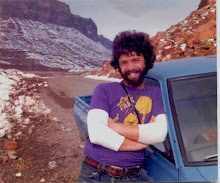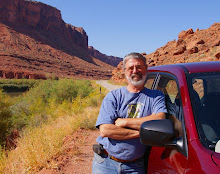 When is America going to grow up as far as marijuana is concerned? It seems like we’ve been running around and around this issue since the 1960s. What happened to all that talk of legalization back in 1967? Here it is over 40 years later with lots more evidence to support that path and we are still arguing about it. There are still people out there whose reference point for smoking pot is the movie Reefer Madness, that great exploitation scare film from the 1930s. It must have worked because it seems we are no closer now then we were back then. Except, of course, medical marijuana. And even that is facing a state by state battle. While you can access medical marijuana here in Colorado, it is still a federal crime to possess it!
When is America going to grow up as far as marijuana is concerned? It seems like we’ve been running around and around this issue since the 1960s. What happened to all that talk of legalization back in 1967? Here it is over 40 years later with lots more evidence to support that path and we are still arguing about it. There are still people out there whose reference point for smoking pot is the movie Reefer Madness, that great exploitation scare film from the 1930s. It must have worked because it seems we are no closer now then we were back then. Except, of course, medical marijuana. And even that is facing a state by state battle. While you can access medical marijuana here in Colorado, it is still a federal crime to possess it!So let’s look at the scary after effects as related by yours truly. My first real high from grass came on a geology class field course back in 1967. It was the spring equinox and our bus group was camped in what was then a group campground (now a picnic area for Weeping Rock) in the heart of Zion Canyon, Utah. My new friend Duncan, an ex-biker, had a little matchbox full of weed and a small pipe to go with it. While the rest of the class sat around that evening’s campfire singing Kumbaya, Duncan and I were off on the fringes “getting nice”.
I wasn’t sure it would take but, in no time at all, I was laughing hysterically at Duncan’s imitation of Bela Lugosi singing So You Want to Be a Rock n Roll Star, the then hit by the Byrds. I thought it was funnier n’ hell, a good indication that I was not in my right mind. Later that evening, I got hung up at staring at nearly full moon rising over the Great White Throne. I knew then that a) I would have to return to the southwest, and b) I couldn’t wait to get home and get high with a little help from my friends.
In any case, time passed. I spent the next four years getting high very often. I joined the park service in 1971 and became a “fed” and the smoking issues began to slowly fade away with only intermittent use into the 80s. Since then I have gotten married (twice), become a father (twice), bought six houses in four different states, became a park manager, served as the director of a board, held several other positions of moderate responsibility, and retired with a comfortable salary. The after effects of all that pot smoking have certainly been insidious indeed.
Of course, it all boils down to personal responsibility and addictive personalities. Same as tobacco or alcohol. Meanwhile the US guvmint continues to pour millions of dollars a year into curbing the marijuana trade. Fellas, can we redirect that money somewhere else where it might do some more good? Like child welfare or helping homeless animals? Or paying down our national debt? Convert all those narcs to park rangers and let them get out and smell the real grass. It just might mellow them out a bit and sharpen their perspective.







